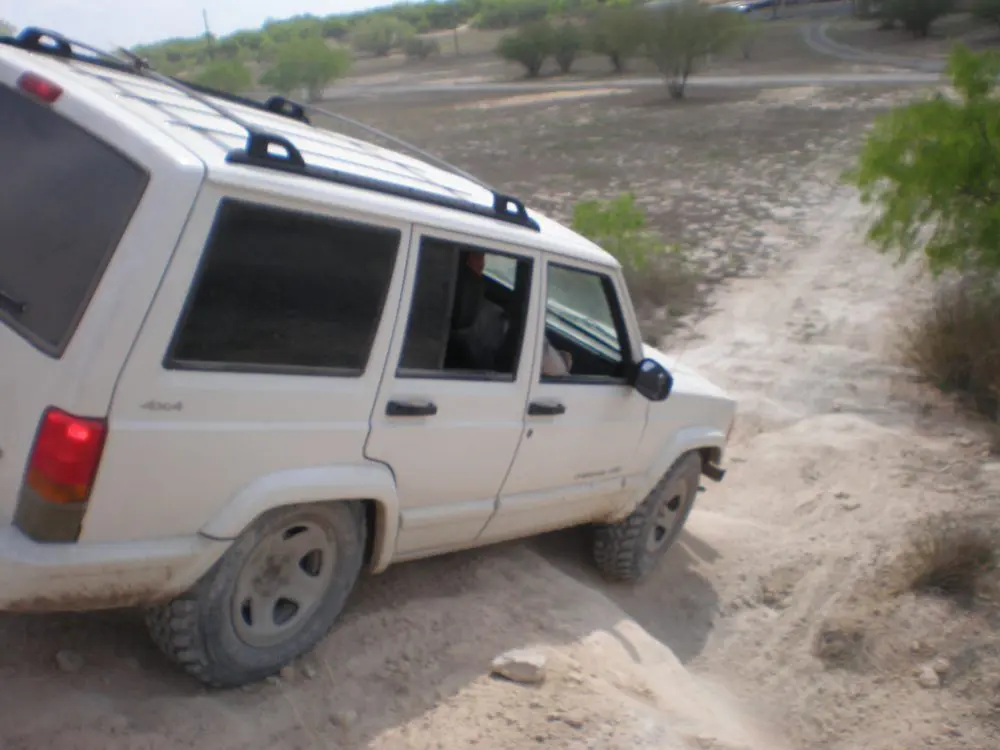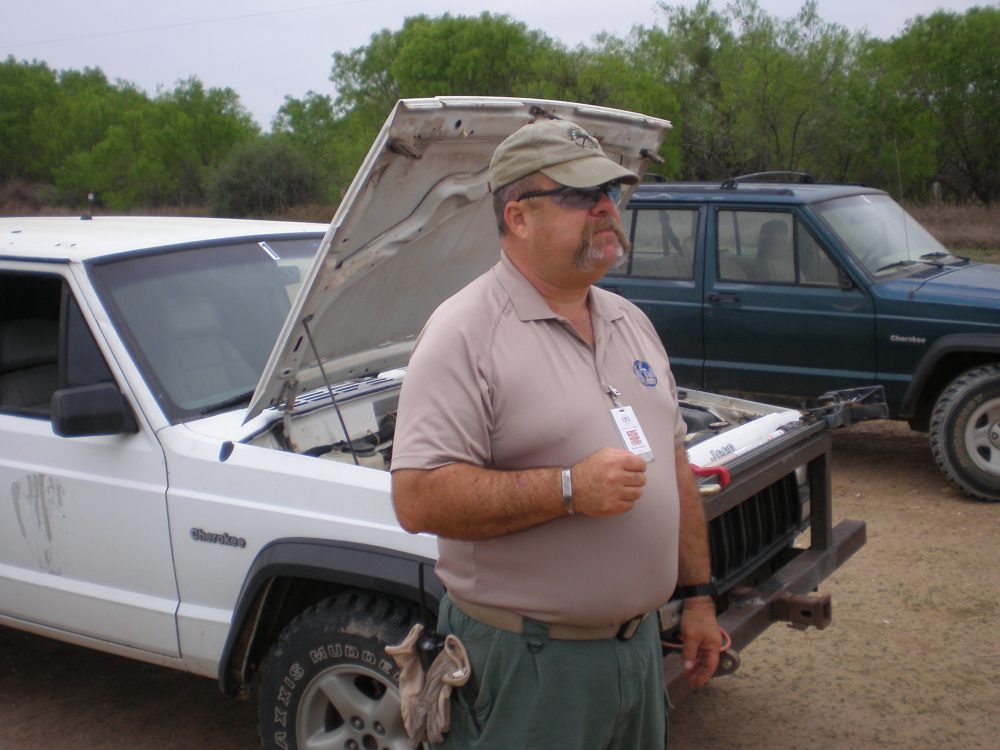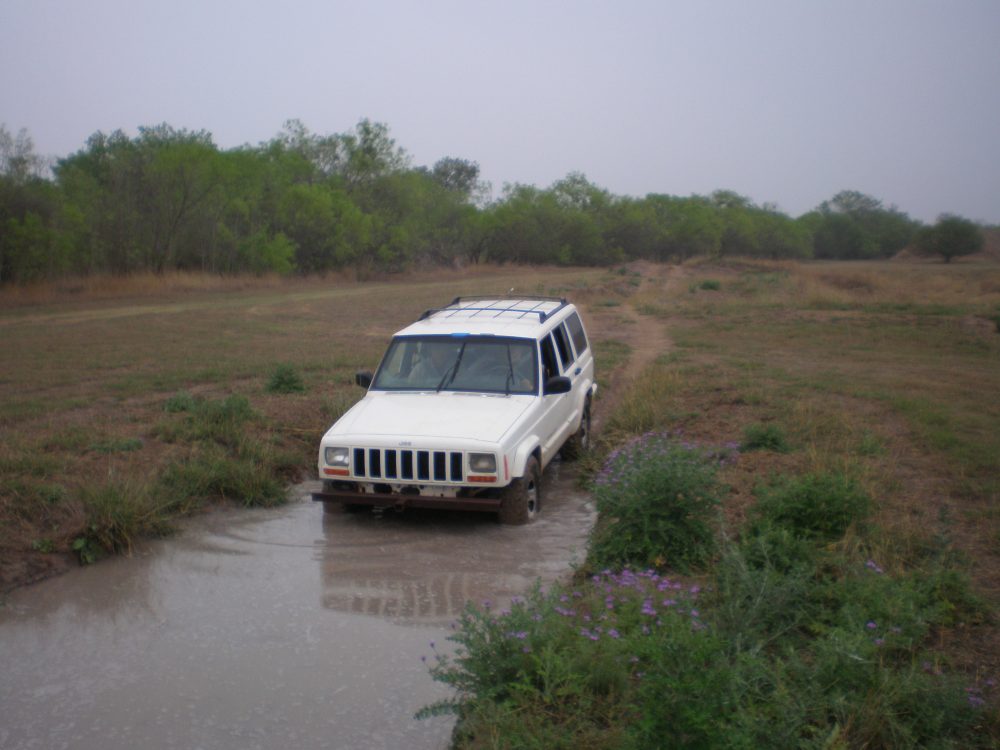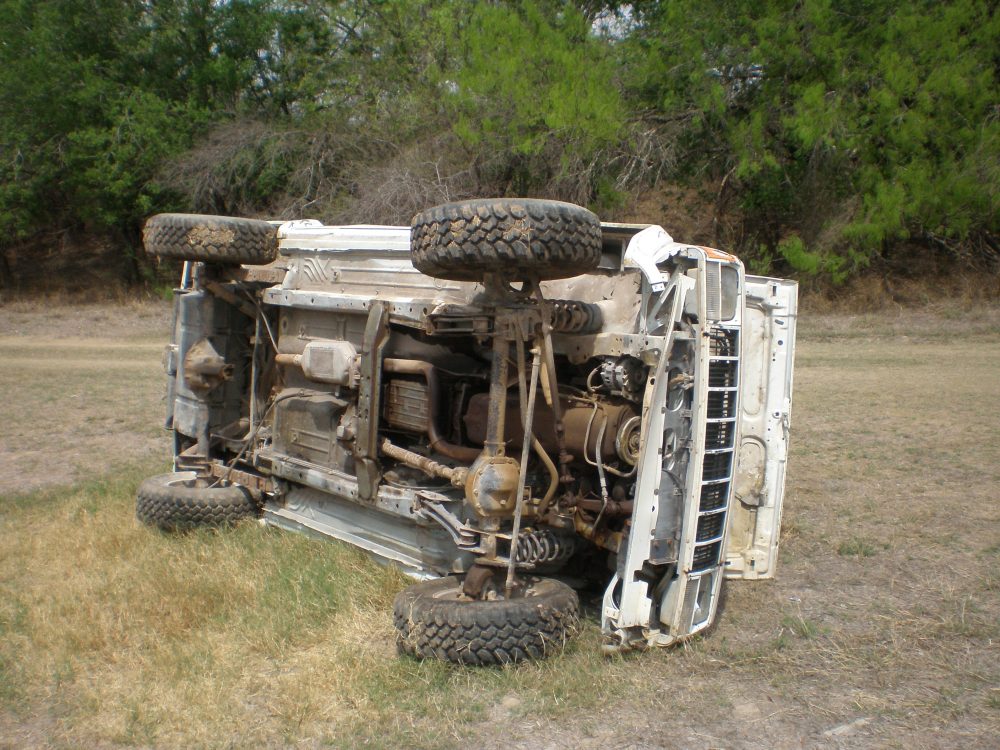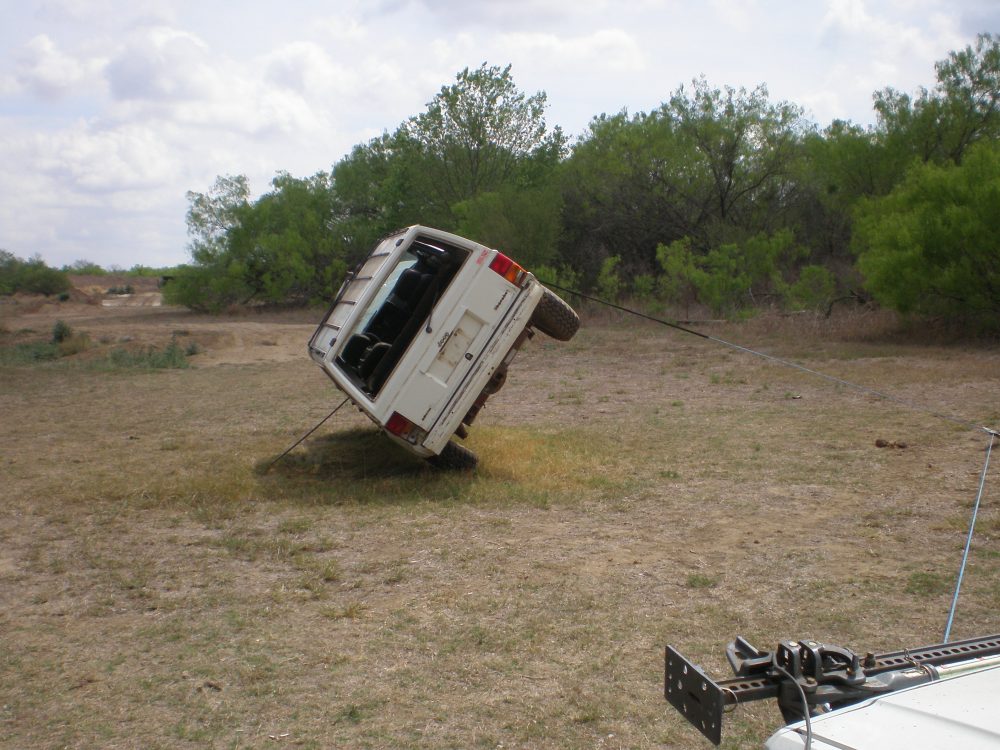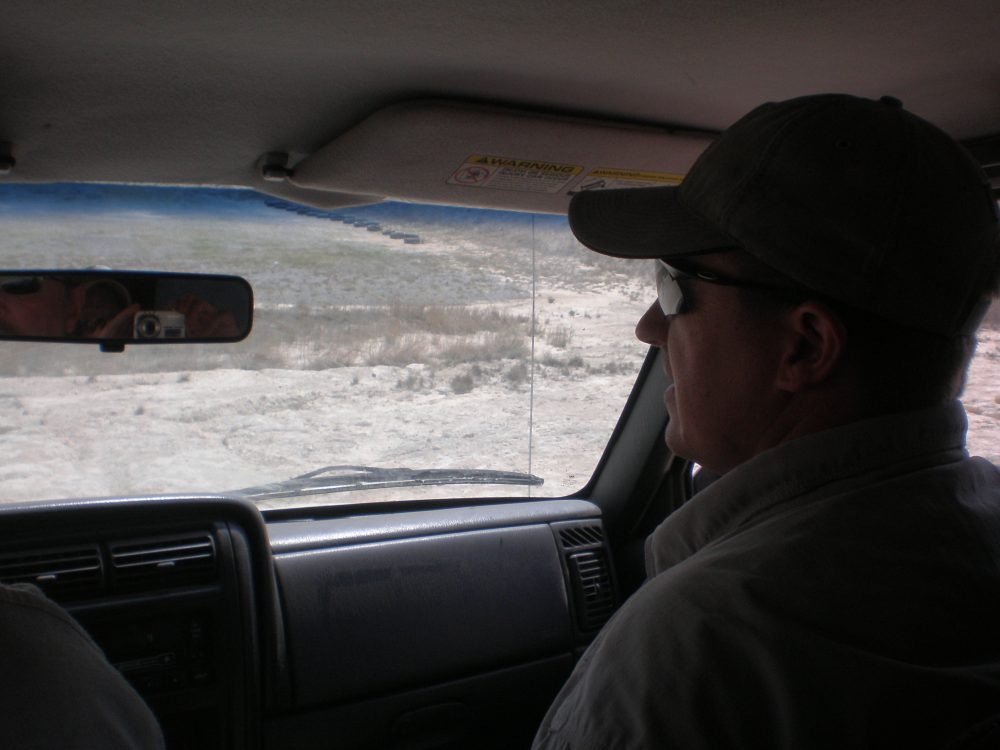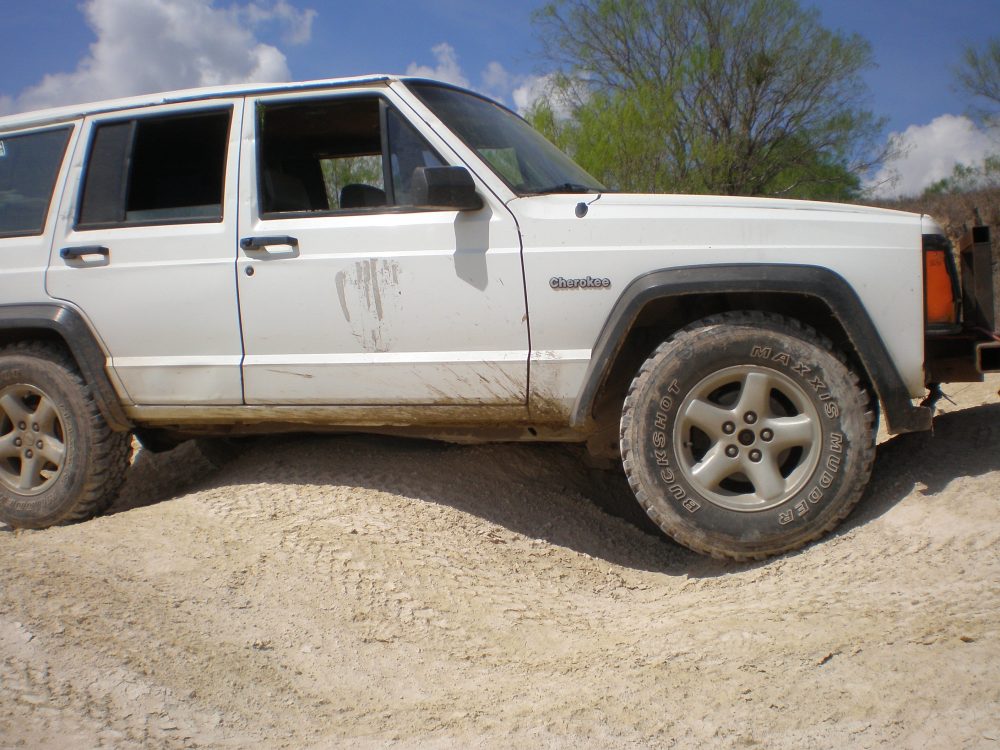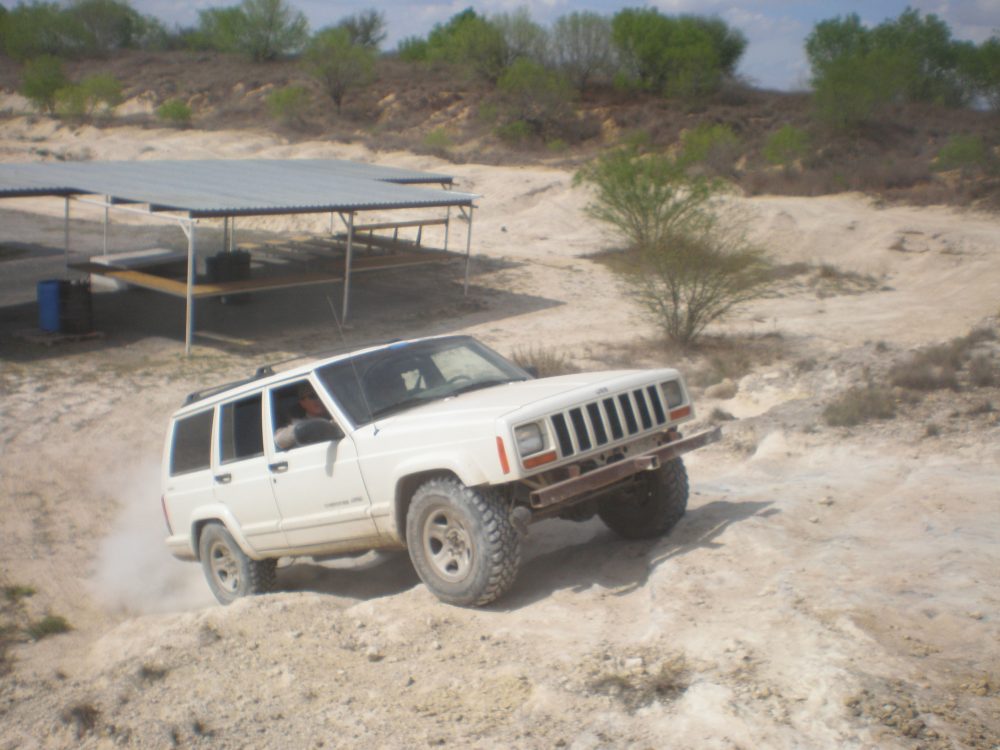What goes up must come down. Falling off in a hole can result in transfer of all power to a tire suspended in mid-air.
In Texas, any self-respecting man with a lick of sense goes to church, owns a gun, loves his dog, and drives a four-wheel-drive truck or SUV.
I was proud of my Nissan Frontier 4X4, despite the fact that I was probably incapable of driving it in excess of 25% of its capabilities. I had huge doubts about my ability to tackle rugged and steep slopes, ford heavy streams, negotiate sharply angled side-slopes, and rock-crawl. This was largely because I had concerns about rolling my vehicle, getting stuck 25 miles from nowhere with a cell phone displaying zero bars, or breaking something that was costly to repair. I was in need of therapy.
The ability to safely move from Point A to Point B in rugged terrain is no laughing matter for military personnel operating in such environments as South America, Iraq and Afghanistan. The same is true for law enforcement and rescue personnel operating in the rural portions of all 50 states.
If chaos breaks out in a large metropolitan area as the result of a natural or man-made disaster, major power outage or civil disorder, I might need to egress to a safer area. In order to effectively execute my exit plan, I may have to abandon streets and highways and drive through and over ditches, medians and fields. No matter how I look at it, there is no valid reason to not have adequate off-road driving skills.
Lead instructor Angus Hodgson gives last-minute instructions prior to students hitting the trails.
As is most often the case, therapy lay in training—and training came in the form of the Off-Road Driving course conducted at the International Training, Inc. (ITI) school located in Dilley, Texas, about one hour south of San Antonio.
This first-class training facility, located on approximately 680 acres, is one of the best-kept secrets in the training world. I am somewhat chagrined to admit that I just found out about it. I knew that I was probably on the right track when I found the following description of the Off-Road Driving course in their 12-page brochure:
“Students can be trained in 4-wheel drive vehicle handling characteristics, proper gear selection, center-of-gravity shifts, winching, and recovery techniques. The course provides opportunities for instruction and practice in the proper methods of traversing obstacles such as logs, ditches, water, mud, sand, inclines and other obstacles. The off-road course traverses the entire facility without interfering with hard-surface courses or ranges. The standard vehicle available for training is the Jeep Cherokee with four-wheel drive capability.”
Student prepares to enter water hazard. It was interesting to see a vehicle push a bow wave 10-15 feet in front of itself.
In a word, the ITI facility is impressive. A tremendous amount of money and thought have been invested in the infrastructure, which is evident as soon as you enter the property.
ITI has done extensive training for national and multi-national corporations and numerous U.S. government agencies since 1989, first in Richmond, Virginia and now in Dilley, Texas.
At the Dilley facility, there are six classrooms, an instructor office building, an administrative and support building and a team room that’s nicer than some homes I’ve lived in and can house 10+ students. All classrooms are climate-controlled and contain multimedia support equipment.
My tour of the grounds revealed five firearm ranges—including a 1,000-yard sniper range—and an impressive array of steel targets, including movers and pop-ups. There is even a field camp area with General Purpose medium tents and field shower facilities.
Another area that caught my eye was the ITI Combat Town, which features structures designed for teaching urban combat, deliberate and dynamic entries, and breaching methods using rams, Halligan tools, shotguns and explosives. Also on site is their fully enclosed SIMS (FX) house comprised of multiple rooms, hallways, and landings.
Accidents happen. Students learned how to safely recover this rolled vehicle.
For a moment, I almost forgot that I was there to learn how to properly drive a 4X4 vehicle.
In retrospect, I should not have been surprised that the facilities are world-class. Upon entering ITI, I was introduced to Tom Harm, ITI Vice-President, and it quickly became apparent that he is no bean-counting desk jockey. There aren’t many administrators of multi-million dollar companies with extensive prior military experience who are also commissioned peace officers like Harm. Tom’s objective is to make ITI a household word in the law enforcement and responsible civilian training communities. I saw nothing during my stay that would make me think this won’t happen.
ITI teaches both hard-surface and off-road driving courses. The hard-surface courses are largely oriented toward the needs of those in the fields of law enforcement, anti-terrorism and protective services. At any one time, ITI has over 40 vehicles available for instructional purposes, including late-model front- and rear-wheel-drive sedans and SUVs, as well as armored vehicles.
Their reasons for choosing the Jeep Cherokee as the vehicle of choice for the Off-Road Driving Course became apparent as we got deeper and deeper into the course, and I left the facility at the end of the day with a newfound appreciation for the capabilities and robustness of this vehicle. I don’t care what anybody says about American automobiles, the Jeep Cherokee is an off-road beast, and I want one.
Student recovers rolled SUV using winch, Pull-Pal and recovery strap.
Given the choice between an impressive facility and knowledgeable instructors capable of ably conveying critical information in a manner that supports learning, I will take the latter every time. Fortunately, ITI provided both. The resumes of all ITI instructors are impressive, with the majority of them having both military and law enforcement backgrounds plus years of practical experience, including overseas combat and domestic special operations.
My teammates during the course were Dave Massey and Bank Miller. Dave and Bank have worked together for some time for one of those alphabet agencies, and I was very much impressed with Dave’s ability to be exposed to new material, ask one or two questions and then perform.
Miller is something of a legend in the firearms training arena. Bank has a law degree; 28 years of experience in local, federal and military law enforcement; 12 years of experience as chief firearms instructor for the DEA; and 13 years of experience as Director of Training for the renowned SIGARMS Academy. Bank confided in me that he had recently signed on as Director of Training for ITI’s new Law Enforcement and Responsible Civilian Training Division. I will be back to ITI to attend one or more of their firearms courses.
Author’s driving coach was Matt Lowell, world’s most welcome back-seat driver.
Our primary instructor was Angus Hodgson. Angus served in the U. S. Army followed by careers as a firefighter and deputy sheriff. He is currently an adjunct law enforcement instructor for San Antonio College. His knowledge of off-road driving techniques is extensive, and we spent several hours in the classroom covering a variety of topics that are important to know if you intend to venture off conventional hard-road surfaces. This included my least favorite subject: geometry.
While this article should not be considered even the flimsiest of substitutes for hands-on training, there was simply too much valuable information conveyed for me not to share some of the more critical points. For example:
- There is a huge difference between tactical off-road driving and off-road racing. Aggressive driving can destroy a vehicle and leave one incapable of executing a mission or even cause loss of life. Always use the proper amount of momentum, and no more.
- Always drive as slow as possible, but as fast as necessary.
- An understanding of the basic operation of the drive-train and components of the four-wheel drive vehicle is essential in order to operate a four-wheel drive vehicle properly.
- Develop an understanding of terrain and obstacles that might be encountered and how to safely negotiate them.
- Remember to secure your seat belt, and fasten down or stow anything that could become a flying missile in the event of a rollover.
- Always perform a pre-trip vehicle inspection.
- Make sure you have support equipment in your vehicle, such as first-aid kits, water for you and your passengers, fire extinguisher, basic tool kit, and basic recovery equipment such as a 30-foot recovery strap, anchor strap, high-lift jacks and a jack base.
- Don’t forget fluids for the vehicle (such as motor oil, brake fluid and coolant), maps, navigation equipment, tire repair kits, tarps or blankets, flashlights and good leather work gloves.
After tutoring us on the importance of understanding the operation of the vehicle’s differentials in an off-road environment and selecting the proper power range for the task at hand, Angus focused on the most important part of any vehicle, the tires.
Tires provide friction between the vehicle and the ground, and without them there is no going, stopping or steering. The key to getting the proper tire footprint is tire pressure, and both tires and pressure should be inspected frequently. One can actually benefit in rough terrain by running the tires at a lower pressure than recommended by the manufacturer, as this increase the vehicle’s “footprint” and increases the contact area with the ground—not unlike the foot of a camel.
Stuck! This SUV is high-centered and was rescued with high-lift jack using technique called “Flying the Car.”
We were then versed in the mechanics of off-roading and introduced to such driving techniques as shuffle-steering; wheel-whipping in mud, sand or gravel; and brake/throttle modulation. We learned how to judge ground clearance and the importance of approach angles, break-over angles and departure angles. This is where the geometry came in, and I found that math can be your friend if it keeps you from getting stuck and possibly stranded. Significant detail was placed upon the proper way to approach ruts (I did not know that there are three types of ruts), logs, ditches, hills, side-slopes, mud, water, sand and rocks.
Angus asked us if we knew what to do if we got stuck. He advocates that we take the time to think out the problem before we attack it. Usually, time is not the problem, so ask yourself: “How did I get stuck, and what is causing it? Am I in the proper power range? What is stuck? What do I need to do to get unstuck? Do I dig it out, rock the vehicle, or elevate the road? Are there any natural resources available to me, such as dirt or rocks?”
Angus impressed upon us the importance of properly and safely dealing with a vehicle rollover. Immediately turn off the ignition! Oil can leak out and cause the vehicle to catch fire. Then safely exit. If a vehicle rolls onto the driver’s side, who gets out first, the passenger or the driver? The answer surprised me—it is the driver. If the passenger opts to exit first, guess what happens when he disengages his seat belt? Answer: he falls onto the driver.
Bank Miller fearlessly tackles deeply pitted incline. Too much momentum is hard on vehicle—too little and vehicle stalls in place.
It was now time to drive, and my driving coach was ITI driving instructor Matt Lowell. Matt is an all-around great guy with a fierce sense of humor and impressive bona fides. Lowell is former 82nd Airborne and a Military Policeman for the Department of Defense, and has a firm understanding of off-roading principles. When we were in our team’s Cherokee, he explained in no small detail the advantages of in-line six-cylinder engines, the importance of torque and the nuances of tactical off-road driving on the ITI tract.
I enjoyed myself no end, despite the fact that negotiating some of the ITI off-road driving trails proved to be challenging. All required the use of proper off-roading technique, and a few were best tackled after taking a few seconds to assess the terrain and picking the best spot for the initial approach.
The entire afternoon was spent converting theory and principles into application.
We did nothing for four solid hours but run trails carved out of the often harsh south Texas terrain. We drove through water almost halfway up the door, over ruts that had to be negotiated at an angle lest you high-center the vehicle, over inclines so abrupt that the approach angle threatened to bury the front bumper, and up slopes covered with river rock where too little or too much momentum could stop you cold or tear up your vehicle.
We convoyed in a heavily wooded area and drove on narrow trails with tree-covered switchbacks that threatened to tear up the side of the vehicle. We learned how to “un-stick” a stuck vehicle using nothing more than a high-lift jack and a recovery strap, as well as how to recover a rolled-over vehicle on a narrow trail with a device called a “Pull-Pal” and a winch.
Finally, we drove over heavily rutted trails and up and down some incredibly rugged and steep slopes containing depressions several feet deep and wide that threatened to high-center our Cherokee. On more than one occasion, I recall looking through the windshield while banging my way up an abrupt and rutted incline and seeing nothing but blue sky. It was a rush!
All too soon, it was time to leave. I left ITI with nasal passages packed with fine Texas dust, and a newfound appreciation for the Jeep Cherokee and ITI’s instructors and facilities.
Where will you be when the next disaster hits, and will you be able to safely drive yourself out of it through unknown and possibly challenging terrain? ITI ensured that I can answer the second part of that with a resounding “Yes!”
SOURCE:
International Training, Inc.
Dept. S.W.A.T.
10700 S IH 35
Dilley, TX 78017
(877) 334-2907
www.itiwsi.com
